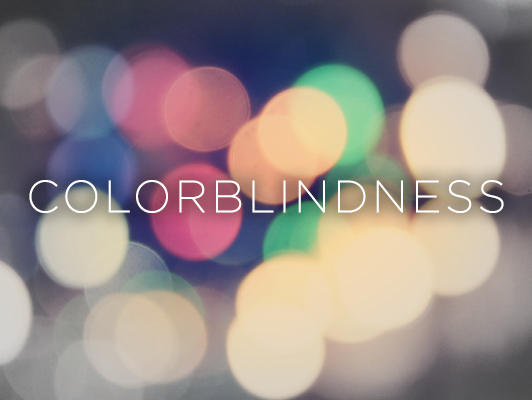Color blindness
Why are males much more likely to be genetically colorblind than females?
Males typically have an X and a Y chromosome, while females typically have an X and another X. The genes responsible for manufacturing photo-pigments in the eye are in the X chromosome.
If a female has an abnormal gene on one of her X chromosomes, she has the other X to rely on to create photo-pigments. If a male has abnormal genes on his X chromosome, he does not have another X chromosome to rely on.
There are three main types:
- Red-green (Deuteranopia) is the most common. Red and green will appear to be a dull green.
- Blue-yellow (Tritanopia) is the second most common. Yellows will be muted and blues will be altered.
- Complete color blindness is very rare. It looks a lot like a black and white movie.
Being color blind may been an advantage for our ancestors. Color blind people can often see contrast better than others. This may have given them an advantage in hunting animals that had camouflaged coats.
How can color-blindness affect the lives of those who have it?
Color blindness can be thought of as a mild disability. Many color differences that seem obvious to us can be missing from another person’s perception.
- They may have trouble seeing bars, pie-graphs and charts, which are common in textbooks, presentations, and business meetings.
- They may not be able to cook meat and tell if it is done by the color.
- They may not be able to judge the ripeness of fruits and vegetables, or differentiate between types of foods.
- Art class will be a challenge.
- Color coded systems like subway maps can be very confusing.
- Traffic lights and painted parking zones are not as obvious.
- Posted signs can be difficult to make out.
- Making outfits “work” can be a challenge.
- Youth sports can be a challenge as opposing uniforms and logos may look alike.
How can you help a color blind person?
- Make sure all interested parties (like teachers) know they are color blind, but ask them not to make a big deal out of it.
- Offer to help them pick out outfits. Help them if they accept.
- Help them learn the order of some things, rather than the color. For instance, the red light is on top, and the green light is on the bottom.
- Plain white backgrounds are best for printing and reading.
- As a personal example, my son is color blind. For Christmas a few years back, I bought him a watch. The face of the watch has one of his favorite comic book characters. He stopped wearing it after a while. I thought it was because he was outgrowing the character. It was because the graphic on the face was “too busy”, and he couldn’t read the face of it to tell time. We got him a different watch with a more plain face. Problem solved.




